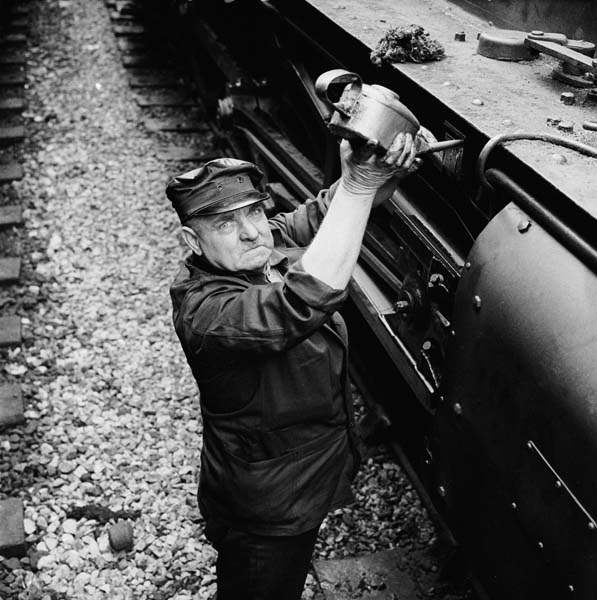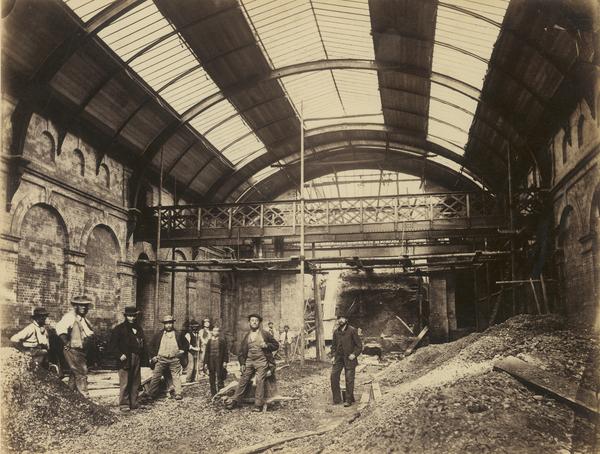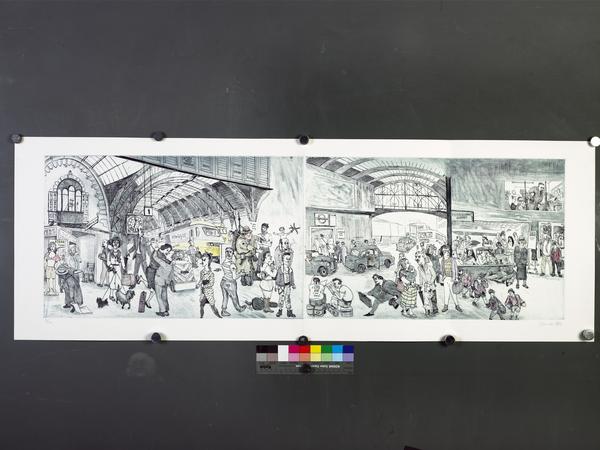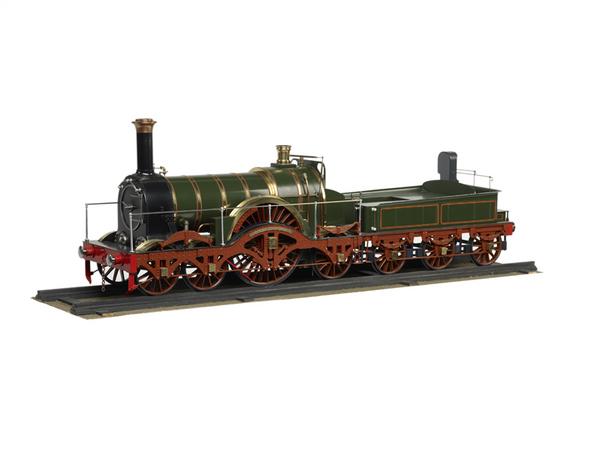Paddington Station: For bears & westward travel
A busy west London hub for Tube and rail travel, Paddington Station’s story is one of innovation, expansion – and a small lost bear from Peru.
Paddington, west London
Since 1854

Building a gateway to the west
Paddington Station, the masterpiece of the great engineer Isambard Kingdom Brunel, opened in 1854.
Located on the western fringe of London's built-up area at that time, it served as the terminus of the Great Western Railway's (GWR) lines from Bristol and the west of England.
Brunel’s grand plan
The present station replaced a temporary terminus, built a short distance away in 1838. In the face of the rapid growth of railway usage, in 1850 GWR commissioned Brunel, the company’s chief engineer, to come up with something far grander.
Brunel was conscious that his station would need to lie entirely below street level, and was at risk of becoming dark and dingy. His solution was to design it around three enormous barrel-vaulted roofs of wrought iron and glass, to let in as much light as possible.
Over 200m long, and with a combined width of over 70m, these roofs formed the largest train-shed roof in Britain at that time. The modular design was made up of nearly 200 prefabricated iron arches and numerous plates of glass. It was inspired by the Crystal Palace, home to the Great Exhibition of 1851, and Brunel recruited the same iron foundry to help – Fox, Henderson and Company.
Modern grandeur
The Great Western Hotel, which spanned the ends of the platforms was completed to the designs of Philip Charles Hardwick in 1854. This grand building, which offered over a hundred suites and an opulent two-storey coffee room, set a trend for lavish railway hotels in London and elsewhere.
Paddington’s modern grandeur meant the artist William Powell Frith chose it as the scene for his famous 1862 painting The Railway Station. Our collection includes an engraving of the picture, which shows an excited crowd on the platform waiting to depart. In the background Paddington’s slender columns rise to the umbrella-like iron and glass roof above, delivering light onto the scene below. Set in the most modern of places, it captured the spirit of the railway age.
“Not so fast next time, Mr Conductor”
Prince Albert, commenting on the speed of the train between Slough to Paddington, 1842
Summer holiday starts here
By the early 20th century increasing numbers of passengers and trains required extra facilities. A new barrel-vaulted roof was added over platforms on the north side. “Span Four” echoed Brunel's designs but was much wider, at 33m, and was made from steel rather than iron.
For many people, Paddington was the starting point for summer holidays in the west and south-west of England and beyond. It was all part of the Paddington show. In the 1920s and 1930s, every day at 10.30am was a great occasion as the Cornish Riviera Express pulled away from Platform One.
One of London’s deadliest train crashes
At around 8am on 5 October 1999, a train that had departed Paddington just minutes earlier collided with a train heading towards the station.
The impact destroyed carriages and caused a fireball to erupt. Known as either the Ladbroke Grove rail disaster or the Paddington rail crash, it killed 31 people and injured over 400.
Heathrow & the Elizabeth line
In 1998, the Heathrow Express service launched, making it possible to travel from Paddington to the airport’s terminals in just 15 minutes.
But a far larger project arrived in the new millennium. An east-to-west rail link for London had been proposed as far back as the 19th century. But it wasn’t until the 2000s that talk became reality.
Work formally started at Canary Wharf in 2009. Thirteen years later the new line was officially launched by Queen Elizabeth II, the monarch after whom it was named.
The Elizabeth line is 118km long, connecting Paddington and Liverpool Street with Reading in the west, and Abbey Wood in the east.
Paddington was one of the main destinations, and gained a small but airy new concourse as a result. The architects also seized the opportunity to clear up two centuries of clutter in and around the old station. Visitors today can again enjoy the spacious vistas that Brunel intended, and which Frith immortalised in his 1862 painting.
British royalty and a Peruvian bear
Paddington has another royal connection. In 1842, Queen Victoria became the first British monarch to travel by train. Her first journey took her from Slough, near Windsor Castle, to Paddington.
She made the journey with her husband, Prince Albert, in a specially built royal carriage. The couple were reportedly impressed with the experience, but, with the engine hitting speeds of up to 44mph, alarmed at travelling so fast. “Not so fast next time, Mr Conductor”, Albert is supposed to have said.
Today, the station’s most famous visitor is Paddington Bear, the beloved character created by author Michael Bond. In 2000, Paddington was memorialised with a statue at the station where he first arrived in London, complete with a note saying “please look after this bear”.










